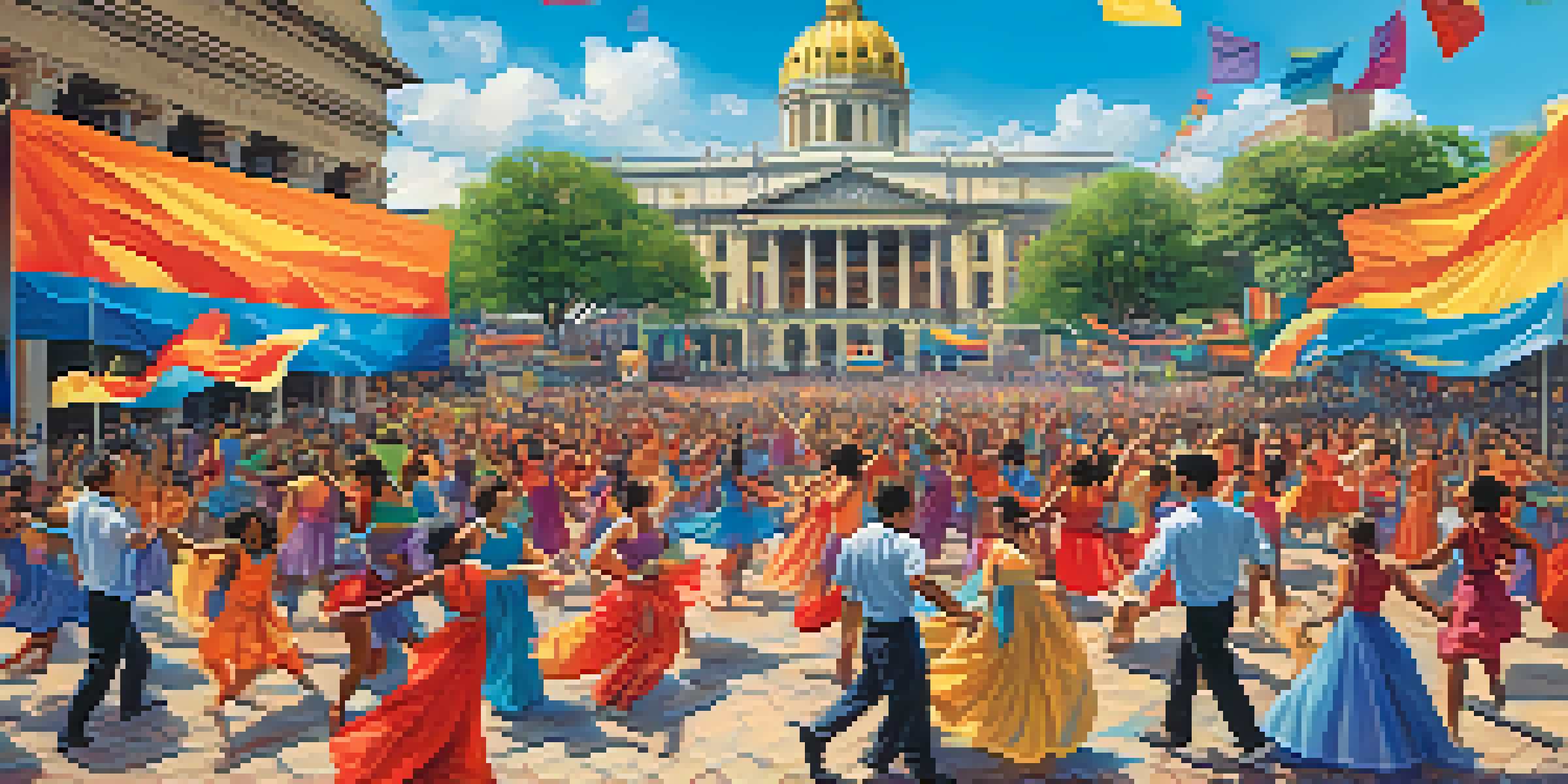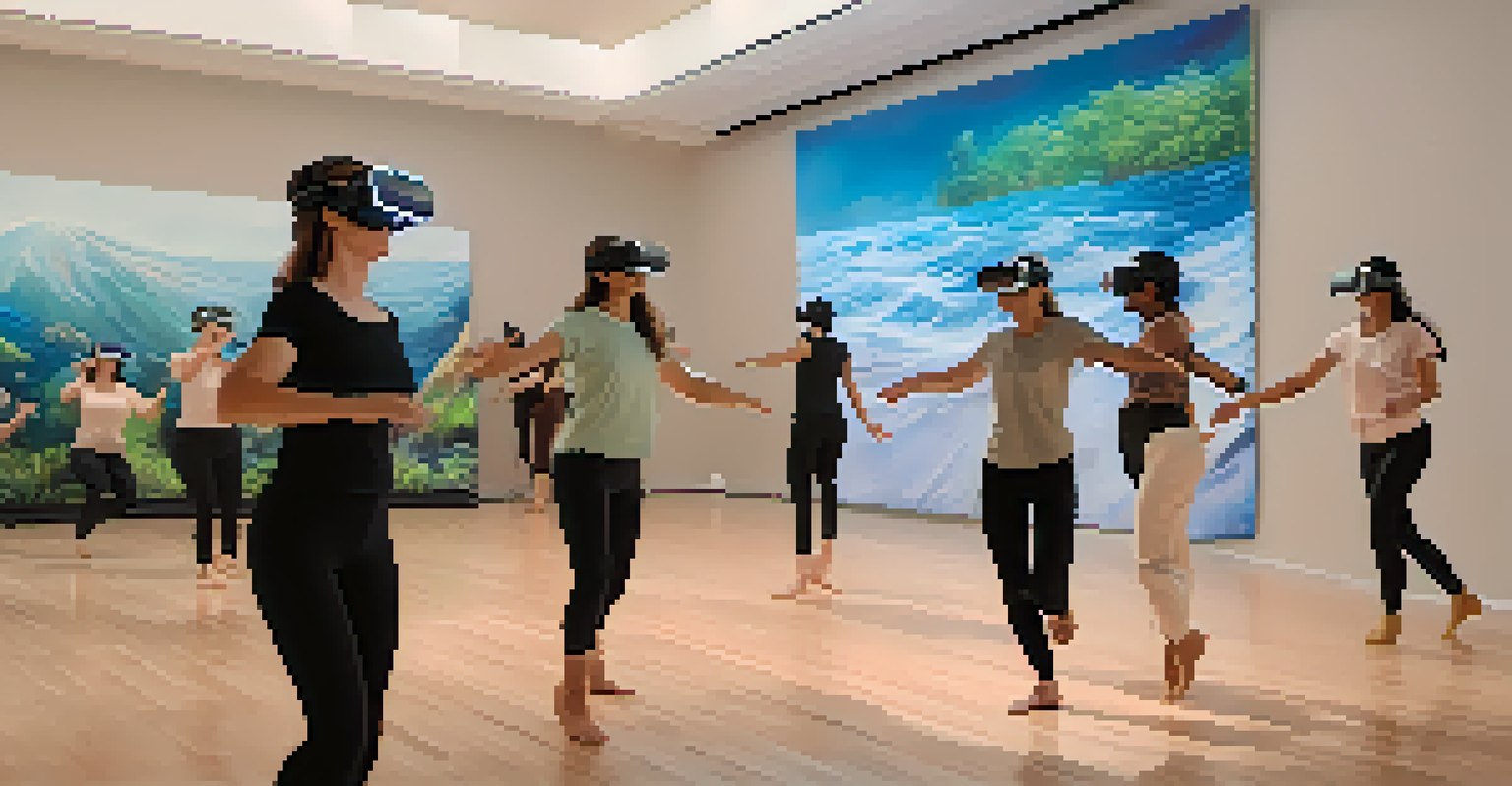Dance Activism: Raising Awareness in Public Spaces

Understanding Dance Activism and Its Impact
Dance activism blends art with advocacy, using movement to express social issues. It allows individuals to communicate messages that words sometimes fail to convey. By harnessing the universal language of dance, activists can engage diverse audiences in ways that resonate deeply.
Dance is the hidden language of the soul.
For example, flash mobs have emerged as a popular form of dance activism, catching people off guard and drawing attention to various causes. These spontaneous performances can spark conversations that might not happen otherwise, making passersby more aware of critical issues.
Ultimately, dance activism transforms public spaces into platforms for dialogue, encouraging communities to reflect on societal challenges while fostering solidarity through shared experiences.
Historical Roots: Dance as a Form of Protest
Throughout history, dance has played a pivotal role in protests and movements. From the civil rights movement to contemporary climate activism, dance has been used to rally communities and inspire change. These performances often symbolize resilience, hope, and a collective call for justice.

One notable example is the 'Dancing for Democracy' initiative, where dancers took to the streets to advocate for voting rights. This movement highlighted the importance of civic engagement and inspired many to participate in democracy through artistic expression.
Dance Activism as Social Expression
Dance activism uses movement to effectively communicate social issues, engaging audiences in profound ways.
By tracing the historical significance of dance in activism, we can appreciate its power as a tool for mobilization and awareness, creating a legacy that continues to inspire future generations.
The Role of Public Spaces in Dance Activism
Public spaces serve as the perfect backdrop for dance activism, as they are accessible to all. Parks, streets, and plazas become stages where the community can gather, witness, and engage with important issues. These shared environments foster a sense of belonging and encourage dialogue among diverse groups.
The arts are not a luxury; they are a necessity for a healthy society.
For instance, during the 'Dance for Our Lives' campaign, activists performed in city squares to raise awareness about gun violence. The visibility of these performances drew large crowds, sparking conversations that extended far beyond the dance itself.
By utilizing public spaces, dance activists can break down barriers, inviting participation from those who might otherwise feel disconnected from social issues. This inclusivity enhances the impact of their message and strengthens community ties.
Incorporating Technology: Dance Goes Digital
In our digital age, technology has revolutionized how dance activism is shared and experienced. Social media platforms provide dancers with a global stage, allowing their messages to reach audiences far and wide. This has led to the creation of viral dance challenges that promote awareness on various social issues.
Take the 'Savage Love' dance challenge, which not only entertained but also raised awareness for mental health. Participants from around the world shared their interpretations, creating a sense of community while highlighting the importance of mental health discussions.
Public Spaces Enhance Participation
Utilizing public spaces for dance activism fosters community engagement and invites diverse participation in important conversations.
By embracing technology, dance activists can amplify their reach and engage with a diverse audience, turning local movements into global conversations that inspire change.
Collaborations: Dance Activism and Community Partnerships
Collaboration is a crucial aspect of dance activism, as it brings together artists, activists, and community members for a common cause. Partnerships can enhance the creativity and impact of performances, creating a richer narrative around the issues at hand. By combining various art forms, these collaborations can captivate and educate audiences.
A great example is the partnership between dancers and local non-profits, where performances are designed to raise funds and awareness for specific causes. These events not only entertain but also serve as a rallying point for community engagement and support.
Through collaboration, dance activism can cultivate a sense of ownership among community members, empowering them to be part of the solution and fostering a deeper connection to the causes they care about.
Challenges Faced by Dance Activists Today
Despite its power, dance activism faces several challenges. One major hurdle is the perception of dance as merely entertainment, which can overshadow its potential for advocacy. Activists often struggle to convey the seriousness of their message when audiences view performances as just a spectacle.
Additionally, logistical issues such as permits and regulations can hinder the ability to perform in public spaces. Activists may find themselves navigating red tape, which can be frustrating and limit their reach.
Technology Amplifies Activism Reach
The integration of technology and social media in dance activism allows messages to reach a global audience, turning local movements into worldwide dialogues.
However, overcoming these challenges is essential for the growth of dance activism. By strategically addressing misconceptions and advocating for supportive policies, dance activists can continue to thrive and make a meaningful impact.
The Future of Dance Activism: Trends and Innovations
Looking ahead, the future of dance activism is bright, with emerging trends that promise to enhance its impact. Interactive performances that invite audience participation are becoming more popular, fostering a sense of community and shared experience. These immersive events encourage spectators to engage with the message actively.
Moreover, the integration of virtual reality (VR) experiences in dance activism could revolutionize how audiences connect with social issues. Imagine stepping into a VR world where you can experience a dance performance that highlights climate change firsthand.

As technology evolves, so too will the methods of dance activism. Embracing these innovations will empower activists to reach new audiences and create lasting change through the art of movement.